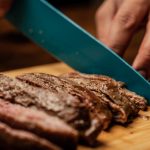Looking to shed some pounds but tired of the same old diet plans? A 30-day modified keto meal plan might be just what you need. Unlike traditional keto diets that can feel restrictive, this modified version offers more flexibility while still delivering impressive fat loss results.
Imagine enjoying delicious meals that keep you full and satisfied, all while helping you burn fat more efficiently. With a balanced approach to carbs, proteins, and fats, this meal plan makes it easier to stick to your goals without feeling deprived. Let’s dive into how this 30-day journey can transform your eating habits and help you achieve the body you’ve always wanted.
Understanding the Modified Keto Diet
A modified keto diet offers a balanced approach to carb and fat intake. It helps users achieve fat loss goals without severe restrictions.
What Is the Modified Keto Diet?
The modified keto diet is a variation of the traditional ketogenic diet. It allows for a slightly higher carb intake, typically around 20-50 grams per day, making it more sustainable for long-term adherence. This approach still emphasizes high-fat, moderate-protein foods but provides more flexibility in food choices. Examples include leafy greens, berries, and nuts.
- Carb Intake: Modified keto allows 20-50 grams of carbs daily, whereas traditional keto restricts carbs to under 20 grams.
- Flexibility: Modified keto offers a broader range of foods, including a wider variety of vegetables and some fruits.
- Sustainability: The less restrictive nature of modified keto makes it easier to follow long-term.
- Protein Levels: Modified keto permits slightly higher protein intake compared to traditional keto.
These differences help individuals maintain their dietary preferences while still promoting effective fat loss.
Designing a 30-Day Modified Keto Meal Plan for Fat Loss
Creating a 30-day modified keto meal plan involves a strategic approach to maximize fat loss while ensuring nutritional balance.
Goals and Nutritional Focus
Setting clear goals and focusing on balanced nutrition forms the foundation of an effective meal plan. The modified keto diet aims to reduce body fat while maintaining muscle mass. Individuals target 20-50 grams of carbs per day to stay in a state of ketosis, promoting fat burning. The macronutrient ratio typically includes 60-70% fats, 20-30% proteins, and 5-10% carbohydrates. By emphasizing nutrient-dense foods like leafy greens and nuts, the body receives essential vitamins and minerals. Monitoring calorie intake is critical to avoid overeating, even on a high-fat diet.
Essential Foods and Ingredients
Including essential foods and ingredients ensures variety and sustains dietary adherence. Key components of the modified keto plan feature:
- Proteins: Chicken, turkey, beef, pork, fish, and tofu.
- Fats: Avocado, olive oil, coconut oil, butter, and ghee.
- Low-carb Vegetables: Spinach, kale, zucchini, broccoli, and cauliflower.
- Berries: Strawberries, blueberries, raspberries, and blackberries.
- Nuts and Seeds: Almonds, walnuts, chia seeds, and flaxseeds.
- Dairy Products: Cheese, Greek yogurt, and heavy cream.
Incorporating these foods provides a variety of flavors and textures, making the meal plan enjoyable and easier to follow. It’s crucial to avoid high-carb foods like bread, pasta, and sugary snacks to maintain a state of ketosis.
Week-by-Week Meal Planning
This section details a structured approach to your 30-day modified keto meal plan to ensure optimal fat loss, starting from kickstarting ketosis to preparing for maintenance.
Week 1: Kickstarting Ketosis
Focus on reducing carbohydrate intake to 20-50 grams per day in Week 1. Include high-fat, low-carb foods to initiate ketosis.
Meal Examples:
- Breakfast: Scrambled eggs with avocado and spinach
- Lunch: Grilled chicken salad with olive oil dressing
- Dinner: Baked salmon with asparagus
- Snack: Almonds
Week 2: Integrating Flexibility
Introduce a variety of foods to avoid monotony and improve adherence in Week 2 while maintaining ketosis.
Meal Examples:
- Breakfast: Greek yogurt with chia seeds and strawberries
- Lunch: Turkey lettuce wraps
- Dinner: Beef stir-fry with bell peppers and broccoli
- Snack: Cheese sticks
Week 3: Adjusting Macros for Continued Fat Loss
Adjust micronutrient ratios to ensure continued fat loss without losing muscle mass in Week 3.
Meal Examples:
- Breakfast: Keto smoothie with coconut milk, spinach, and protein powder
- Lunch: Tuna avocado boats
- Dinner: Pork chops with cauliflower mash
- Snack: Walnuts
Week 4: Preparing for Post-Plan Maintenance
Gradually introduce more carbs, focusing on whole foods to maintain weight loss and prepare for post-plan life in Week 4.
- Breakfast: Low-carb oatmeal with flaxseeds and raspberries
- Lunch: Cobb salad with blue cheese dressing
- Dinner: Grilled shrimp with zucchini noodles
- Snack: Mixed berries
Physical Activity and Keto: Enhancing Fat Loss
Combining physical activity with a keto diet can significantly enhance fat loss. Exercise improves overall health and supports ketosis.
Recommended Exercises
Incorporating various exercises aids in maximizing fat loss while on a keto diet.
- Cardio: Activities like running, cycling, or swimming increase heart rate and burn calories. Aim for 150 minutes per week.
- Strength Training: Lifting weights or bodyweight exercises, like squats and push-ups, help maintain muscle mass and boost metabolism.
- HIIT (High-Intensity Interval Training): Short bursts of intense activity followed by rest periods. Effective for burning fat quickly.
- Flexibility Workouts: Yoga or Pilates improve flexibility and reduce injury risk, supporting overall fitness.
Balancing Exercise with Keto Intake
It’s crucial to balance physical activity with keto dietary intake to maintain energy levels and avoid fatigue.
- Carb Adjustments: Consume carbs around workout times to fuel performance and recovery. Focus on nutrient-dense carbs within your daily allowance.
- Electrolytes: Supplement with electrolytes like sodium, potassium, and magnesium to prevent imbalance and muscle cramps. Keto can deplete these, especially with intense exercise.
- Protein Intake: Ensure adequate protein to support muscle repair and growth. Keep protein within 20-30% of daily intake.
- Hydration: Drink plenty of water to stay hydrated, as ketosis can cause increased water loss.
Balancing these aspects ensures that the keto diet complements physical activities, enhancing fat loss and overall fitness.
Monitoring Your Progress
Tracking progress plays a key role in maintaining motivation and ensuring the effectiveness of your 30-day modified keto meal plan for fat loss.
Tools and Techniques for Tracking
Various tools help track progress during a keto diet. Fitness apps (like MyFitnessPal, Fitbit) monitor calorie intake, macronutrient ratios, and physical activity levels. Smart scales provide insights into weight, body fat percentage, and muscle mass. Regular journaling helps track food intake, energy levels, and workout performance. Blood ketone meters (such as Keto-Mojo) measure ketone levels to confirm ketosis.
Adjusting the Plan Based on Results
Adjusting the meal plan ensures continuous progress toward fat loss goals. If weight loss stalls, consider reducing daily carb intake or increasing physical activity levels. When experiencing fatigue or muscle cramps, increasing electrolyte-rich foods or supplements might help. If muscle loss occurs, boost protein intake slightly to support muscle preservation while maintaining ketosis. Regularly reviewing progress helps finetune the plan for optimal results.
Conclusion
Embarking on a 30-day modified keto meal plan can be a transformative journey towards achieving fat loss and body goals. By focusing on balanced nutrition and maintaining muscle mass, individuals can make significant strides in their fitness journey. It’s essential to pair the keto diet with regular physical activity to maximize results.
Monitoring progress with tools like fitness apps and smart scales helps keep track of improvements and make necessary adjustments. Whether it’s tweaking carb intake or increasing physical activity, staying flexible and responsive to one’s body is key. With dedication and the right approach, anyone can navigate the modified keto diet successfully and see the fat loss results they desire.
Barbara has lost 100 pounds following the Modified Keto Diet. She started following the Keto Diet in July of 2019. She enjoyed the meals and the healthy lifestyle so much that she studied under the Speed Keto creator, Dr. Harlan Kilstein, and became a Certified Keto Coach in July 2021. After her husband was diagnosed as diabetic, she became a Certified Diabetic Coach in 2022. She coaches clients both in individual and group settings. Throughout her journey with the Modified Keto Diet, her A1C dropped from 6.5 to 4.9. She continues to enjoy healthy eating and helps others to do the same.







